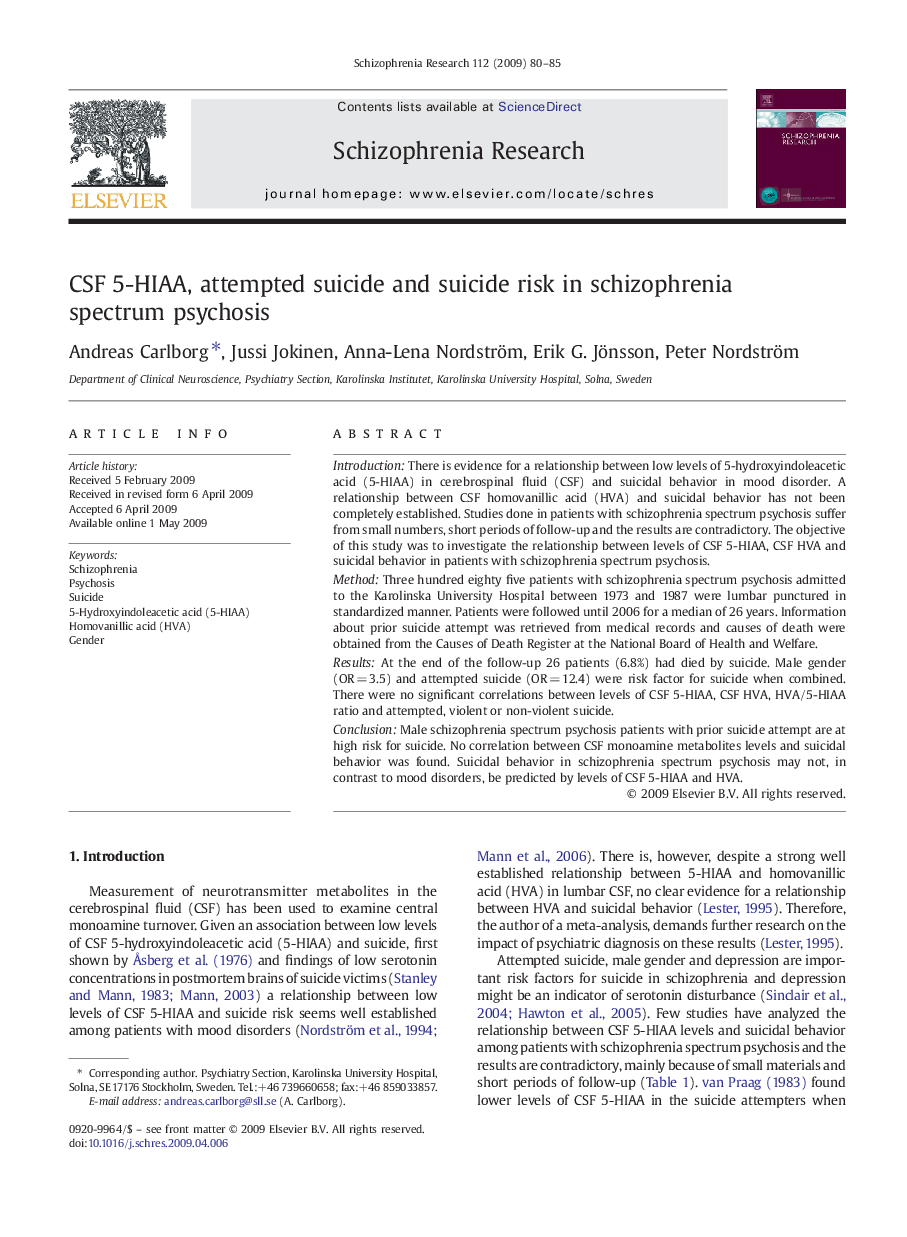| Article ID | Journal | Published Year | Pages | File Type |
|---|---|---|---|---|
| 341486 | Schizophrenia Research | 2009 | 6 Pages |
IntroductionThere is evidence for a relationship between low levels of 5-hydroxyindoleacetic acid (5-HIAA) in cerebrospinal fluid (CSF) and suicidal behavior in mood disorder. A relationship between CSF homovanillic acid (HVA) and suicidal behavior has not been completely established. Studies done in patients with schizophrenia spectrum psychosis suffer from small numbers, short periods of follow-up and the results are contradictory. The objective of this study was to investigate the relationship between levels of CSF 5-HIAA, CSF HVA and suicidal behavior in patients with schizophrenia spectrum psychosis.MethodThree hundred eighty five patients with schizophrenia spectrum psychosis admitted to the Karolinska University Hospital between 1973 and 1987 were lumbar punctured in standardized manner. Patients were followed until 2006 for a median of 26 years. Information about prior suicide attempt was retrieved from medical records and causes of death were obtained from the Causes of Death Register at the National Board of Health and Welfare.ResultsAt the end of the follow-up 26 patients (6.8%) had died by suicide. Male gender (OR = 3.5) and attempted suicide (OR = 12.4) were risk factor for suicide when combined. There were no significant correlations between levels of CSF 5-HIAA, CSF HVA, HVA/5-HIAA ratio and attempted, violent or non-violent suicide.ConclusionMale schizophrenia spectrum psychosis patients with prior suicide attempt are at high risk for suicide. No correlation between CSF monoamine metabolites levels and suicidal behavior was found. Suicidal behavior in schizophrenia spectrum psychosis may not, in contrast to mood disorders, be predicted by levels of CSF 5-HIAA and HVA.
